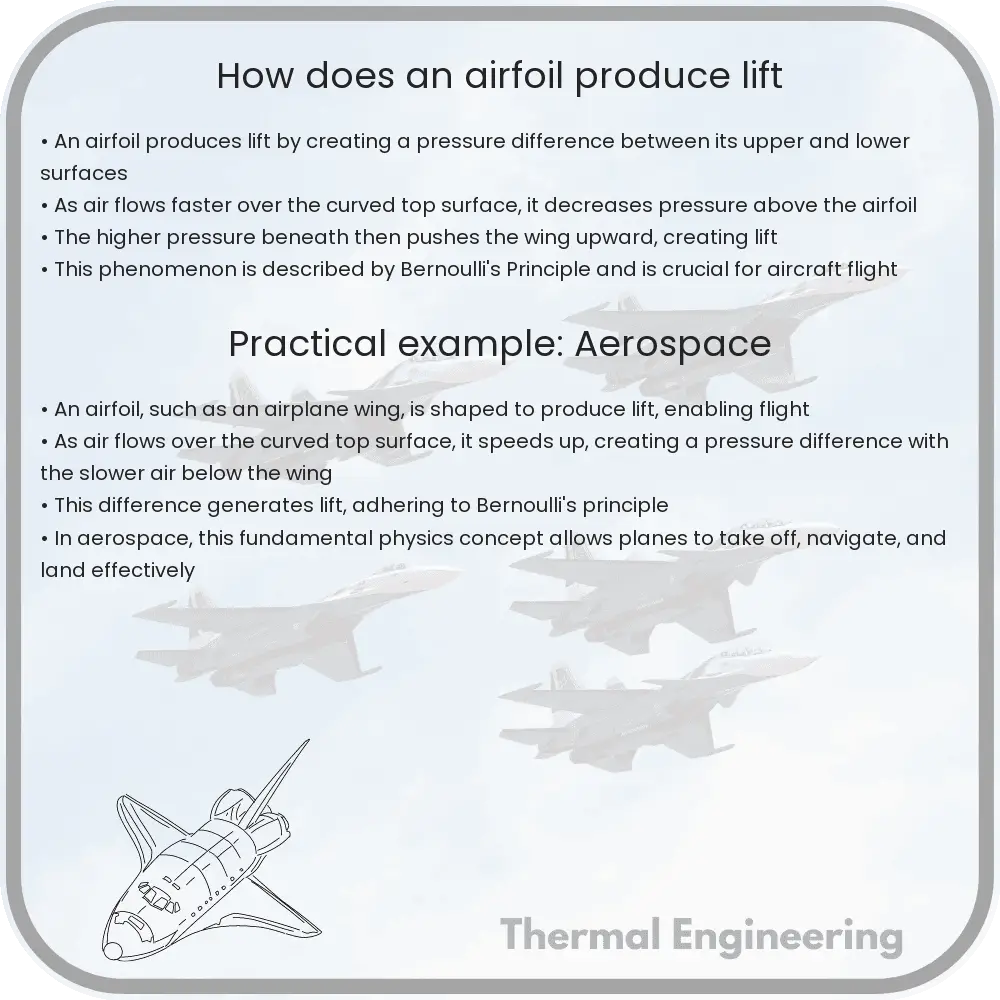Learn how an airfoil produces lift, exploring aerodynamics, Bernoulli’s principle, airflow, and angle of attack for effective aircraft flight.

How Does an Airfoil Produce Lift?
The generation of lift by an airfoil is a fundamental concept in aerodynamics and is crucial for the flight of aircraft. An airfoil, commonly known as a wing, uses its shape and motion through air to lift the aircraft off the ground. Understanding how an airfoil produces lift involves a blend of physics principles, particularly those related to fluid dynamics and the Bernoulli’s Principle.
The Shape of an Airfoil
An airfoil is typically characterized by its curved upper surface and flatter lower surface. This design is intentional and critical for its function. When an airfoil moves through air, the air is split and forced to move over and under the wing.
The Path of Airflow and Lift Creation
The key to generating lift lies in the behavior of the airflow around the airfoil and the resulting pressure differences:
- Longer Path Over the Top: Air traveling over the top of the wing follows a longer path than the air going underneath. This is primarily due to the curvature and thickness of the wing.
- Increased Air Speed: According to Bernoulli’s principle, the increase in the velocity of the airflow over the top surface of the wing leads to a decrease in pressure.
- Pressure Difference: The faster-moving air over the top of the airfoil creates a lower pressure area in comparison to the higher pressure on the underside of the wing. This difference in pressure results in an upward lifting force.
Angle of Attack and Lift
The angle of attack (AOA) is another critical factor in lift production. It is defined as the angle between the chord line of the wing and the oncoming air.
- Optimal Angle: At the optimal angle of attack, lift is maximized and drag is minimized. This angle allows for the most effective deflection of airflow downwards, which according to Newton’s third law (action and reaction), results in an upward lift.
- Stalling: If the angle of attack becomes too large, the smooth flow of air around the airfoil can separate from the upper surface, causing a sudden reduction in lift and an increase in drag, leading to a stall.
Mathematical Representation of Lift
The lift (L) generated by an airfoil can be calculated using the Lift Equation:
L = 0.5 * ρ * V2 * A * CL
- ρ (rho): Air density
- V: Velocity of the airflow
- A: Wing area
- CL: Lift coefficient, which is a measure of the ability of the wing to generate lift at given AOA and airspeed
Each of these components influences the amount of lift produced by an airfoil. For instance, increasing the airspeed or the angle of attack (up to a certain point before stall) typically increases the lift coefficient, thereby increasing the total lift force.
Conclusion
The production of lift by an airfoil is a fascinating blend of physics principles applied ingeniously in aircraft design. By understanding the interaction of airspeed, wing shape, angle of attack, and airflow behavior, engineers can optimize wings to achieve efficient, safe, and effective flight outcomes. Such principles not only apply to airplanes but also to various technologies such as wind turbines and race cars, showcasing the versatile implications of aerodynamic engineering.